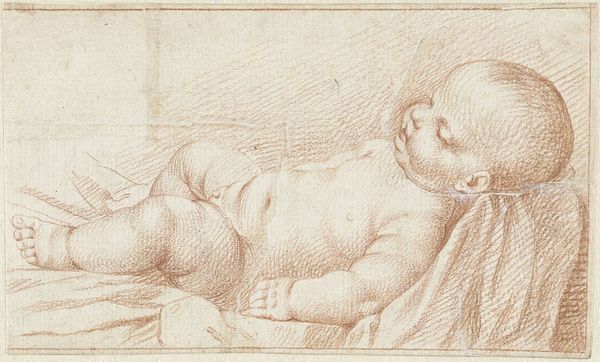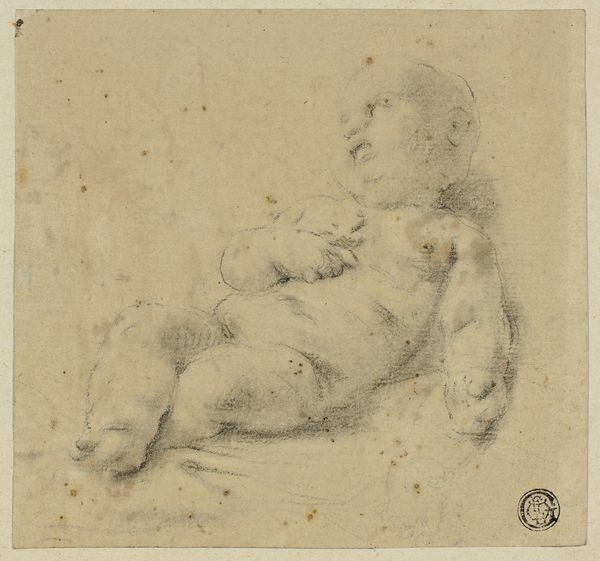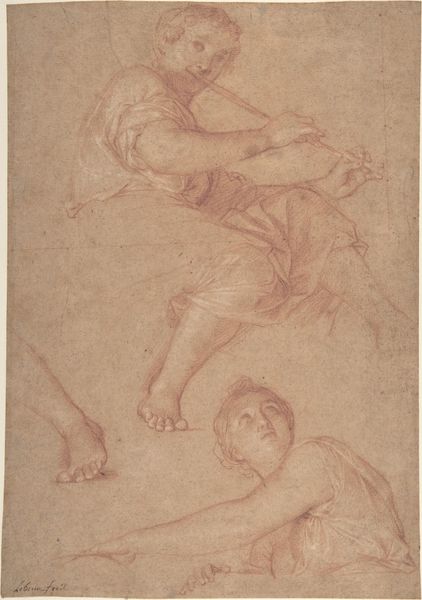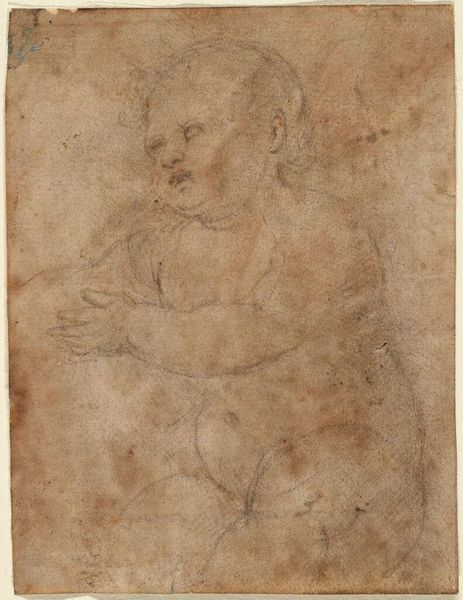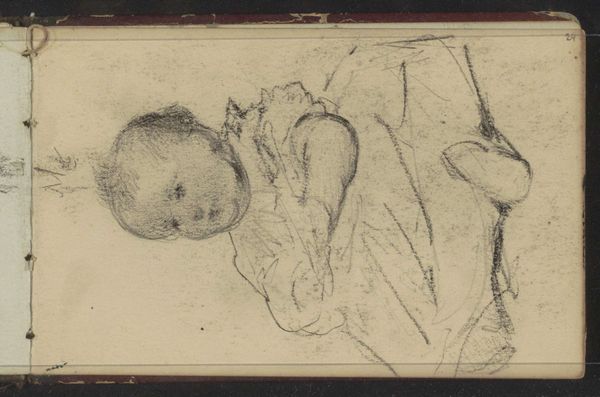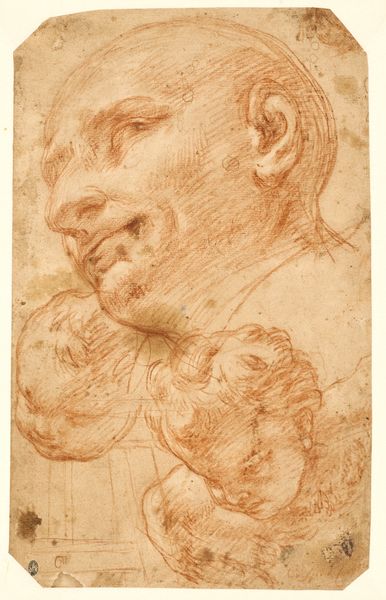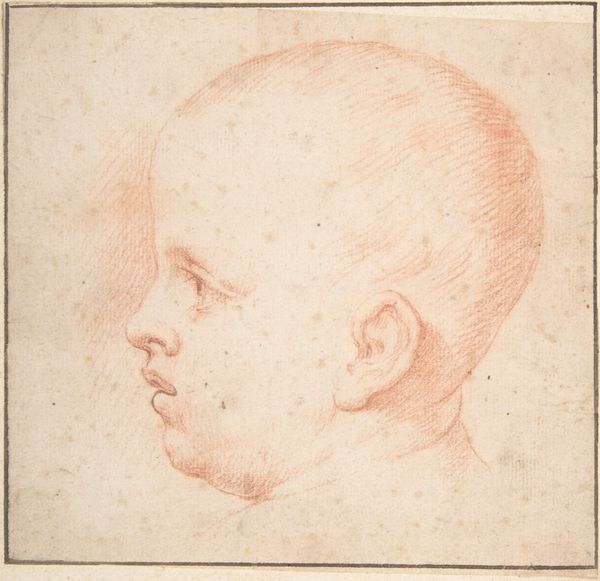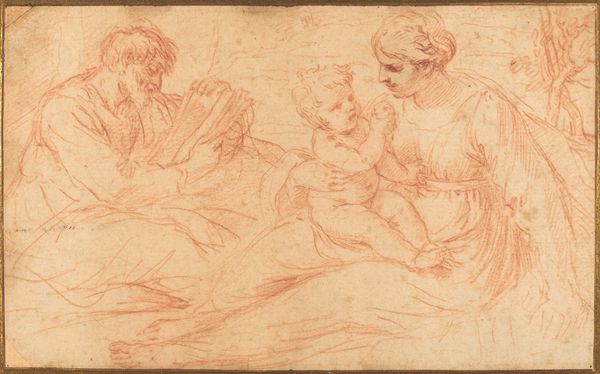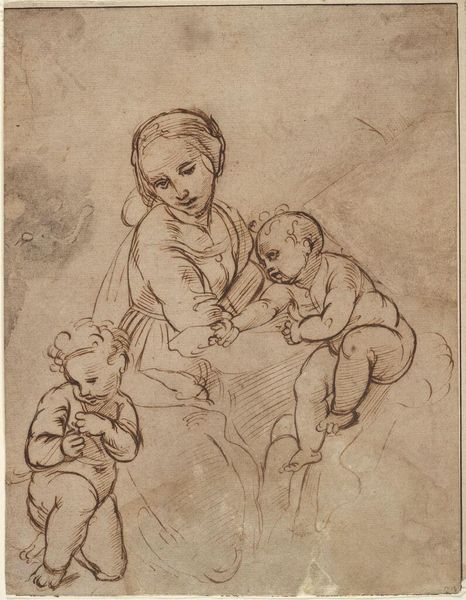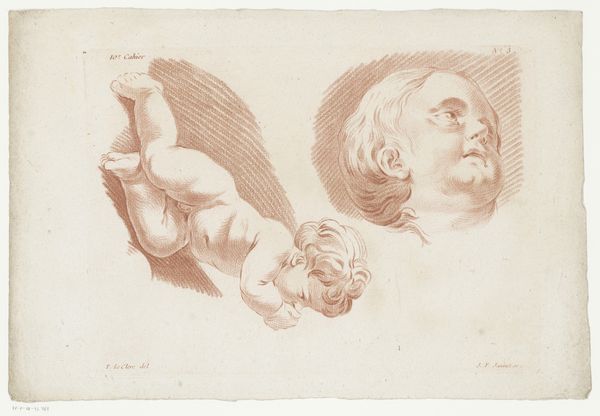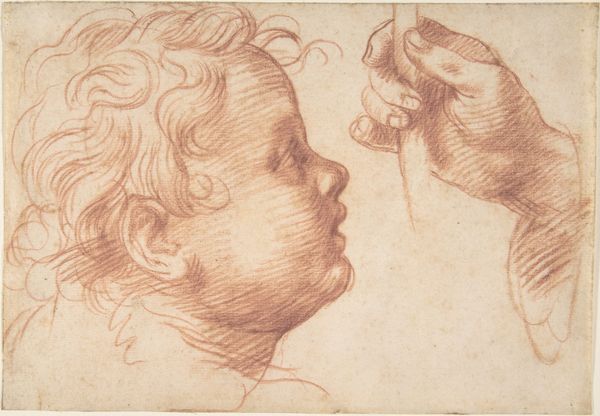
drawing, pencil
#
portrait
#
drawing
#
charcoal drawing
#
pencil drawing
#
pencil
Dimensions: overall: 29.4 x 42.4 cm (11 9/16 x 16 11/16 in.)
Copyright: National Gallery of Art: CC0 1.0
Editor: Here we have Frank Brangwyn's "A Sleeping Baby," a drawing rendered around 1917, likely with pencil and possibly charcoal. The softness of the lines gives it a very tender feel. What strikes me is how the visible process of layering pencil strokes creates this gentle texture. What do you see in this piece? Curator: The material reality of this drawing immediately presents itself. Consider the cost and availability of paper and pencils in 1917. The rapid sketches suggest an economy of means, not merely of material, but also of time and labour. We must recognize that Brangwyn wasn’t simply depicting an infant. He was engaged in a practice shaped by social and economic realities. Editor: So, the *act* of creating, the labor... it's crucial to understanding the drawing itself? Curator: Precisely. The fleeting nature of a baby's sleep, captured through the readily available yet delicate medium of pencil, highlights the temporal and material constraints under which artists operate. Was Brangwyn working on commission? Was this study for a larger piece? The answers to these questions fundamentally shift how we perceive it. Look at the rough paper stock; its texture becomes part of the final artwork. Editor: It’s almost like he’s elevating a sketch, which would traditionally be a means to an end, into the artwork itself, focusing on the process of its creation rather than just the final image. Curator: Exactly. And in doing so, challenging traditional hierarchies. He draws our attention to the physical making of the image, making visible the hand of the artist and the materials used. What do you make of that? Editor: I never considered the paper itself contributing so significantly to the aesthetic. This changes how I perceive drawings—it’s about the entire process, not just the final depiction. Curator: Seeing the inherent value in the process... that is how we start deconstructing the traditional ideas surrounding art. It opens a broader view.
Comments
No comments
Be the first to comment and join the conversation on the ultimate creative platform.
